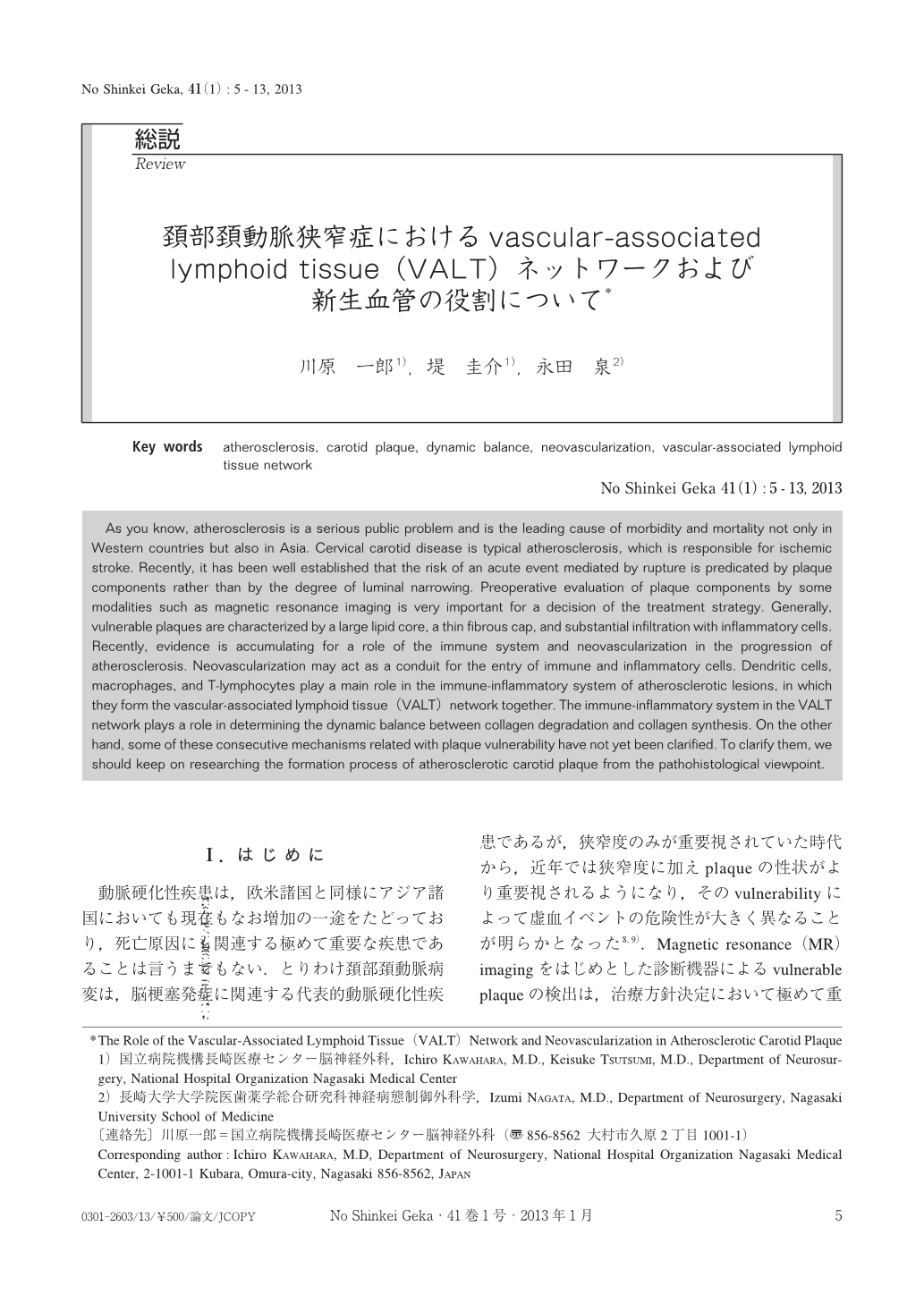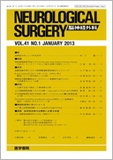Japanese
English
- 有料閲覧
- Abstract 文献概要
- 1ページ目 Look Inside
- 参考文献 Reference
Ⅰ.はじめに
動脈硬化性疾患は,欧米諸国と同様にアジア諸国においても現在もなお増加の一途をたどっており,死亡原因にも関連する極めて重要な疾患であることは言うまでもない.とりわけ頚部頚動脈病変は,脳梗塞発症に関連する代表的動脈硬化性疾患であるが,狭窄度のみが重要視されていた時代から,近年では狭窄度に加えplaqueの性状がより重要視されるようになり,そのvulnerabilityによって虚血イベントの危険性が大きく異なることが明らかとなった8,9).Magnetic resonance(MR)imagingをはじめとした診断機器によるvulnerable plaqueの検出は,治療方針決定において極めて重要であり,数多くの報告がなされている12,26,27).一般的なvulnerable plaqueの病理学的定義としては,豊富な脂質成分の存在,薄い線維性被膜,著明な炎症細胞の浸潤などが挙げられる1,4)が,免疫系統の関与や新生血管の存在も極めて重要であり,これらは動脈硬化の進行とも深く関連している3,5,6,11,18,19,25).しかしながら,plaque vulnerabilityに関連した一連のmechanismは複雑で,今なお解明されていない点も多く,それらを明らかにするためには,病理組織学的方面から動脈硬化病変の形成過程(Fig.1)を再確認し,researchすることは極めて重要である.本稿では,plaque内における免疫・炎症反応や新生血管の存在に着目し,その役割や今後の展望について概説する.
As you know, atherosclerosis is a serious public problem and is the leading cause of morbidity and mortality not only in Western countries but also in Asia. Cervical carotid disease is typical atherosclerosis, which is responsible for ischemic stroke. Recently, it has been well established that the risk of an acute event mediated by rupture is predicated by plaque components rather than by the degree of luminal narrowing. Preoperative evaluation of plaque components by some modalities such as magnetic resonance imaging is very important for a decision of the treatment strategy. Generally, vulnerable plaques are characterized by a large lipid core, a thin fibrous cap, and substantial infiltration with inflammatory cells. Recently, evidence is accumulating for a role of the immune system and neovascularization in the progression of atherosclerosis. Neovascularization may act as a conduit for the entry of immune and inflammatory cells. Dendritic cells, macrophages, and T-lymphocytes play a main role in the immune-inflammatory system of atherosclerotic lesions, in which they form the vascular-associated lymphoid tissue(VALT)network together. The immune-inflammatory system in the VALT network plays a role in determining the dynamic balance between collagen degradation and collagen synthesis. On the other hand, some of these consecutive mechanisms related with plaque vulnerability have not yet been clarified. To clarify them, we should keep on researching the formation process of atherosclerotic carotid plaque from the pathohistological viewpoint.

Copyright © 2013, Igaku-Shoin Ltd. All rights reserved.


